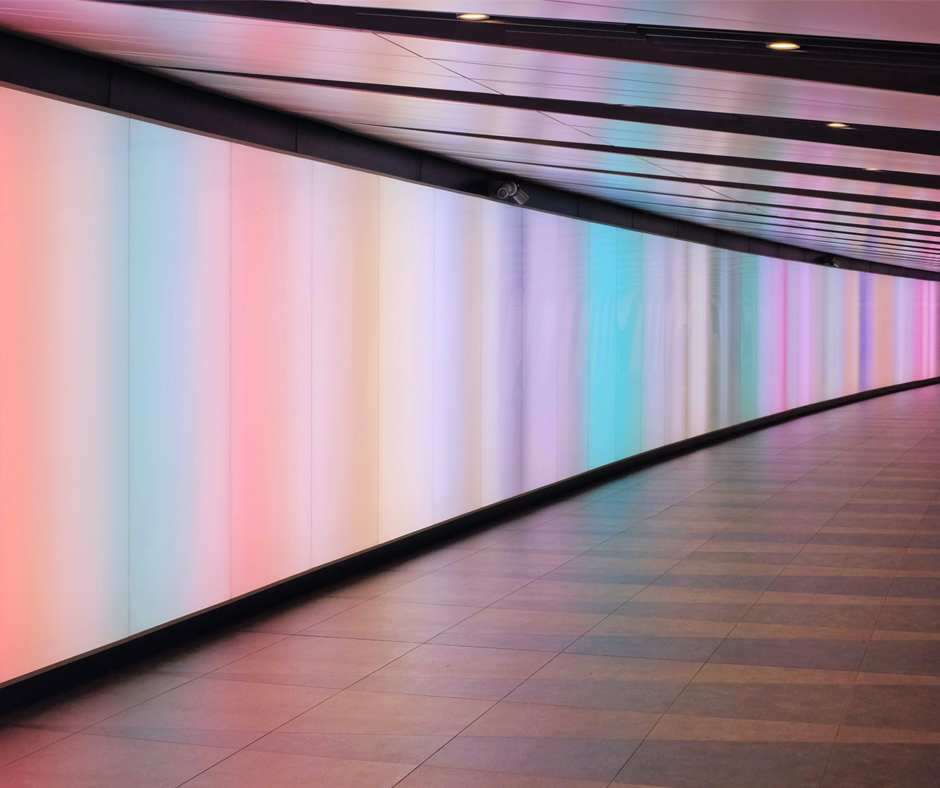
Not only has the pandemic impacted the day-to-day workflows of almost every sector, it’s also inadvertently streamlined processes and catalysed some much-needed change. One industry that suddenly found itself in high demand amid the fallout of 2020 was the studio services used by high-end movies, television and advertising agencies. With travel off the cards and face-to-face working tricky for the foreseeable, technologies like immersive LED studios found themselves with much to offer a workforce that’s had to change its long-held habits overnight. It’s this service that Ian Armstrong, Director of Topaz Virtual Productions and Creative Enterprise Evolve participant’s hopes to bring to productions of all sizes via a new, state-of-the-art studio centre.
“The growth projections of streaming ranges between 15% to 22% between now and 2028 because of people like Netflix, Disney and Apple delivering their streaming services,” explains Armstrong, detailing some of the current trends rippling through the production services world. “A consequence of this is a growing demand for studio and production capacity around the world, especially in the UK which is seen as a centre for excellence when it comes to film and high-end TV production. “It’s all good,” he continues, “but there’s a huge shortfall in studio capacity generally. There’s been various reports that claim up to two million square foot of studio space is required just to keep up with demand – but what we’ve seen since the global pandemic is a growth in the use of LED and virtual production techniques to produce content and there’s an even greater shortfall of virtual production stages in the world.”
LED screens and virtual productions may be terms you’re already familiar with. They made the news back in 2019 alongside Disney+ hit Star Wars spin-off series The Mandalorian, with Director Jon Faveau using this new technology to shoot over 50% of the show’s first season – creating in-camera alien landscapes and eliminating the need for physical location shoots. Cut to a turbulent few months later and it doesn’t take long to see how beneficial this creative combination of complex game engine software and versatile LED studio production could be in a world where travel and physical contact with others is limited.
“What you tend to find is LED stages popping up in original sound stage spaces, used for production and then dismantled,” says Armstrong of the current work process used by filmmaking teams. “There seems to be a real lack of permanent facilities that offer a range of LED studios whereby people from high-end TV, film production or advertising can come in and use them in the same way they’d use a normal studio set up,” he adds, commenting on a glaring gap in the marketplace. ‘In essence, we’re trying to build a technology centre with a suite of LED studios that visiting productions can use.”
Topaz Virtual Productions is well on its way to achieving this goal. From LED green screens and state-of-the-art XR stages, to volumetric capture facilities – all of their services will be available for hire by productions of all sizes from anywhere in the UK. It will be a place where new jobs and creative employment can be formed: “The UK is such a centre of expertise,” says Armstrong. “I think the more LED studios that get built, and the more people that use this type of facility, will ultimately help improve this expertise, alongside any skills shortages.”
The arrival of this game-changing new technology also comes with some eco-friendly benefits that can help productions meet their green quotas. “This technology allows you to film in environments that, historically, you would have had to send quite a lot of people to,” says Armstrong. “In the absence of the availability to travel, and also the increasing awareness of the fact that we need to be more responsible for how we expend carbon, things like LED studios allow productions to be shot in a single location, with a fewer number of people and without the need to travel. We’re trying to build a permanent facility of studios that help those involved in advertising, right through to film production and high-end TV, reduce their carbon footprint.”
While productions ground to a halt during the pandemic’s peak, Armstrong is confident that the sector will soon resume full pelt – and when it does, it’ll be using this exact technology. “It’s disruptive and changes the way people think about production. We’re already seeing companies like Netflix doubling their production budget funding, largely through increases in subscriptions,” he says, pointing to growing user demand alongside the huge and steady potential of the advertising sector. “My ultimate vision would be to create a substantial fixed facility that services the film, high-end TV and advertising markets whilst also having links to academia, where undergraduates and postgraduates can learn on the job on real projects, so we can create a legacy that this industry needs,” he says looking forward. “Historically, this is quite a closed shop industry and one of the things I like about this space right now is that it’s disruptive. Anywhere with disruptive technology creates opportunity.”
Creative Enterprise Evolve is open for applications, learn more and apply before 7th July.
Related stories

